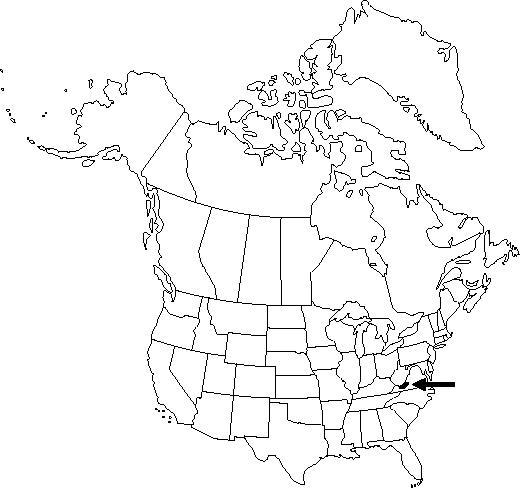Clematis coactilis
J. Elisha Mitchell Sci. Soc. 83: 36. 1967.
Stems erect, not viny, 2-4.5 dm, densely silky, hirsute, or ± tomentose with appressed hairs. Leaves simple. Leaf blade rarely 1-pinnate, narrowly to broadly ovate, unlobed or sometimes few-lobed, 5-12 × 3-9.5 cm, leathery, ± prominently reticulate adaxially; surfaces abaxially densely silky-tomentose with appressed hairs, not glaucous. Inflorescences terminal, flowers solitary; bracts absent. Flowers broadly urn-shaped; sepals pale yellow to rarely purple-tinged, lanceolate, 1.9-3.4 cm, margins not expanded or narrowly expanded to 1.7 mm wide, thin, not crispate, tomentose, tips obtuse, spreading, abaxially finely tomentose. Achenes: body pilose, hairs of rim spreading; beak (2.5-)3-4.5(-5.5) cm, plumose. 2n = 16.
Phenology: Flowering spring–early summer.
Habitat: Shale barrens, rarely on sandstone, dolomite, or limestone outcrops
Elevation: 300-600 m
Discussion
Of conservation concern.
Clematis coactilis is known only from western Virginia. C. S. Keener (1967, 1975) suggested that this species may be a stabilized derivative of past hybridization between C. albicoma and C. ochroleuca.
In fruit, Clematis coactilis is distinguishable from C. ochroleuca by its combination of spreading to reflexed hairs on the achene rims and whitish to pale yellow (rarely tawny) hairs on the beaks, contrasting with the strongly ascending hairs on the achene rims and tawny (rarely yellowish white) hairs on the beaks of C. ochroleuca. This species and C. ochroleuca lack stomates on the adaxial surface of the leaves, whereas the closely related species C. albicoma, C. fremontii, and C. viticaulis have stomates on both leaf surfaces (C. S. Keener 1967).
Selected References
None.
